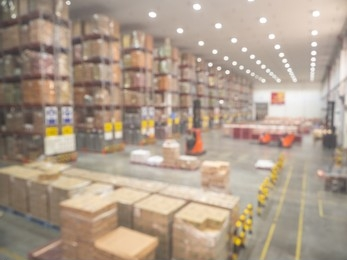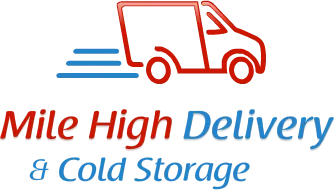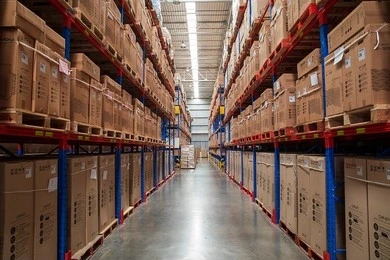Cross-docking is a logistics strategy that emphasizes speed and efficiency in the movement of goods from receiving to shipping, with minimal or no storage in between. While it’s known for its ability to streamline supply chains and reduce handling costs, one common question that arises is, “How long does cross-docking take?” In this blog, we’ll explore the factors that influence the duration of Cross-Docking processes and provide insights into how long it typically takes.
Understanding the Cross-Docking Process
Before getting into the timeframes, it’s essential to have a basic understanding of how cross-docking works:
Receiving: Products arrive at a distribution center or cross-docking facility from suppliers or manufacturers. These products are often pre-sorted and labeled for quick identification.
Sorting and Processing: Upon arrival, the products are swiftly sorted based on their intended destinations. This sorting process is critical, as it ensures that the right products end up on the right trucks for immediate shipment.
Shipping: The sorted products are then loaded onto outbound trucks, often within a matter of hours or even minutes. These trucks transport the goods directly to stores, customers, or other distribution centers.
Now, let’s take a look at the factors that influence the time it takes for cross-docking.
1. Complexity of Products
The nature of the products being cross-docked can significantly impact the time it takes. Simple, uniform items that require minimal handling and sorting will move through the process quickly. However, complex products, those with special handling requirements, or items that need careful inspection might extend the cross-docking time.
For example, cross-docking electronic components may be faster than cross-docking fragile glassware, which requires extra care in handling.
2. Volume of Products
The quantity of products being processed plays a crucial role in determining the time required for cross-docking. A large volume of products may take longer to sort and process than a smaller shipment. Facilities designed for high volumes of goods can handle more significant quantities efficiently.
3. Efficiency of Sorting
Efficiency in sorting and processing is key to minimizing cross-docking time. Advanced technology, such as automated conveyor systems and barcode scanners, can accelerate the sorting process. Well-trained staff and effective organizational processes also contribute to efficiency.
4. Transportation Time
The time it takes to move goods from one location to another can vary significantly. If products are arriving from nearby suppliers or manufacturers, the transportation time to the cross-docking facility will be shorter. Conversely, products arriving from distant locations will require more time in transit.
5. Planning and Scheduling
Effective planning and scheduling can optimize cross-docking operations. Facilities that have a well-designed plan in place for receiving, sorting, and shipping can minimize delays. Coordination with suppliers and carriers to ensure timely arrivals is essential.
6. Product Specifics
Certain products, like perishable goods or products with strict delivery windows, require faster cross-docking to maintain their quality or meet customer expectations. These products may be prioritized, leading to quicker processing times.
7. Facility Design and Layout
The design and layout of the cross-docking facility itself can influence processing times. Facilities designed with efficient flow patterns and ample space for sorting and loading can expedite the process. In contrast, crowded or poorly organized facilities may experience delays.
8. Industry Standards
Different industries may have varying standards for cross-docking times. For example, the retail industry often demands rapid cross-docking to keep store shelves stocked with the latest merchandise, while other industries may have more relaxed timeframes.

Typical Cross-Docking Times
Given the numerous factors at play, it’s challenging to provide a one-size-fits-all answer to the question of how long cross-docking takes. In practice, cross-docking times can vary widely.
In some cases, a cross-docking operation may take just a few hours, particularly for simple, well-planned shipments of non-perishable goods. On the other hand, more complex operations or those involving high volumes of products might extend to several hours or even a full day.
It’s worth noting that many businesses aim to continually improve their cross-docking processes to reduce processing times. This ongoing effort toward efficiency often results in shorter cross-docking durations.
Benefits of Shorter Cross-Docking Times
Reducing Cross-Docking times offers several benefits:
Faster Order Fulfillment: Shorter cross-docking times enable quicker order fulfillment, meeting customer demands more efficiently.
Lower Handling Costs: Minimizing the time products spend in the facility reduces labor and equipment costs associated with handling and storage.
Improved Inventory Management: Faster cross-docking helps businesses maintain leaner inventories, reducing carrying costs and the risk of obsolescence.
Enhanced Customer Satisfaction: Meeting delivery timelines and providing fresher products can lead to higher customer satisfaction and loyalty.
Conclusion
The duration of cross-docking processes varies depending on a range of factors, including the complexity of products, volume, efficiency of sorting, transportation time, planning, product specifics, facility design, and industry standards.
Businesses employing cross-docking as a supply chain strategy should continually strive to improve their processes to achieve shorter processing times and reap the associated benefits of increased efficiency and customer satisfaction.
Efficiency matters in logistics. Find out how to reduce cross-docking times, improve customer satisfaction, and lower costs with Mile High Delivery and Cold Storage. Contact us today to discuss your business needs and how we can help you!

